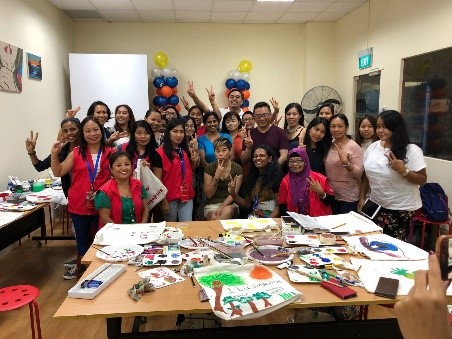Article By: PracticeForte Advisory Affiliate Ms. Amy Lim
Cross-border marriages are becoming increasingly common in a globalised world. Unfortunately, when some of these marriages break down, an application may have to be made in Court if one parent wishes to relocate with the children.
This gives rise to the proverbial “between a rock and a hard place” decision which the Court must make. Do they decide in favour of the parent seeking to (typically) return to a home country, thus leaving one parent behind? Or do they decide against the relocation, thus forcing a party who wishes to leave to stay behind in a place they may have no family support or slim chances of employment?
In the High Court decision of UFZ v UFY, the Court considered various factors before upholding the lower court’s decision to allow the mother’s application to relocate back to her home town in the United Kingdom (UK) with 3 young children aged 9, 11 and 14.
Briefly, the case involved a couple who moved from the UK to Singapore in 2008 due to the father’s employment, with their 2 older children. A third child was born in 2009. Taking quickly to Singapore, they applied for permanent residency in 2009. In 2013, the father and 3 children obtained Singapore citizenship. In order for the father to obtain his citizenship, he had to renounce his UK citizenship whilst the children were allowed to retain dual citizenship.
Relationship between parties soured and the mother filed for divorce in 2014. Orders were made on the ancillary matters giving the mother care and control of the children and allowing her to relocate back to her hometown in the UK in January 2017. The father was given liberal access to the children. The father appealed against the decision.
The Judge took pains to stress that in any decision relating to the children, the welfare of the child is paramount. Further, it was also underscored that any application would be decided on its own facts.
From a reading of the case, it appears that the Court were influenced by the fact that the father travelled extensively for work thus leaving the mother to essentially be the primary caregiver of the children if they remained in Singapore. This would prevent her from obtaining employment. However, if she were to return to the UK, she would have strong family support which would enable her to return to the workforce.
Whilst the children had spent most or all their lives in Singapore, the Judge noted that they had expressed a “strong desire” to move to the UK. This was especially so after a 2-week visit to the UK where they met with their mother’s extended family and also visited a school there. The children also expressed a liking for the different learning environment. It is pertinent to note that the children were in local schools in Singapore and were not doing well.
The mother had applied for an exit permit for the eldest son in order to comply with his National Service requirements and the son himself was aware that he would be required to return to Singapore in a few years.
In addition to the above, the Judge also took into account the fact that the mother had previously applied to relocate in 2014 but this was not granted then. As such, it was felt that the mother and children had already been prepared for some years to make the move.
As for the father, the Judge noted that the father had rented an apartment in the same condominium in order to stay close to the children and was making efforts to build a relationship with them. Without placing too much emphasis on it, it was also observed that the father had since repartnered and the children had apparently refused to see the father due to the presence of the new girlfriend.
If the relocation was allowed, it was noted that the father’s work often took him to Europe and it was possible that he could travel to see the children in the UK. He had also been granted 13 weeks of school holiday access with the children. Additionally, whilst the Judge noted that it would be ‘agonising’ for the father to be parted for extended periods from his children, they could still keep in frequent contact through the Internet.
Our views
The 2 main factors the Court consider in general are whether the wishes of the leaving parent are reasonable and the child’s loss of relationship with the parent that is left behind. In this case, the Court found that the mother’s wishes were reasonable and that the loss of relationship with the father was alleviated by the fact that he had liberal access, could still see them when he travelled to Europe for work and could also keep in constant contact through the Internet.
Some of the factors appeared to have weighed against the application, particularly, the fact that the 2 older children had spent most of their lives in Singapore. Moreover, the youngest child had been born in Singapore. The children’s desire to move to the UK – undoubtedly coloured by their mother’s wishes – was based on a brief 2-week trip there. During that trip, they had spent a few hours in a school in the UK, which would surely be insufficient to form an opinion as to whether they would like it there. It is interesting to note that the Court did not raise the possibility of the mother obtaining the help of a domestic helper, which is a common enough occurrence in Singapore. This would have enabled her to return to work. This was not a case where the mother claimed she had made efforts to look for work and was unsuccessful. Further, there was also no confirmation that the mother could in fact find work in the UK. Also, the fact concerning the children’s poor performance in school is a little puzzling as this was not a case where the children had special needs. If the curriculum or teaching style in local schools was not suitable, could not the children have attended international schools in Singapore instead of having to move all the way to the UK?
The High Court itself noted that relocation decisions are not based on “ticking off boxes on a checklist”. It follows that the many factors and concerns involved in such decisions can make a relocation application unpredictable and rife with uncertainty.
What then should be done? We often find mediation to be very useful and highly effective in negotiating an agreement in relocation cases. Mediation gives both parties an avenue to discuss their case without the stress and expenses arising from a court case. Since mediation is focused on finding a solution that meets both parties’ concerns, the outcome tends to be a win-win for both sides. Further, parties are generally more inclined to comply with an agreement which they have negotiated on their own terms as opposed to a decision made by a third party (the Court).
ABOUT PRACTICEFORTE’S PROJECT RELOCATION
Started in July 2017 by the Family Division of PracticeForte Advisory, this project is an initiative to make legal help more accessible to spouses in overcoming the legal challenges to obtain court consent to return to their countries of origin with their children for the welfare of the children.
Project Relocation is part of PracticeForte Advisory’s ongoing efforts to further our twin pillar focus of “Building Peace, Building Expertise”
ABOUT PRACTICEFORTE ADVISORY
PracticeForte Advisory is a network of independent professional advisory firms comprising, amongst others, lawyers, mediators, accountants, forensic experts and others. This niche group of professional advisory firms are banded together under the brand name: PracticeForte Advisory.
PracticeForte Advisory is not an entity and all the affiliate firms are independent of the others.
ABOUT PRACTICEFORTE FAMILY DIVISION
PracticeForte Family Division comprises of specialist practitioners of Family Law including lawyers focused on matrimonial issues, mediators trained in resolving all family concerns; parenting coordinators to assist parents in their co-parenting journeys, counsellors and therapists.
AMY LIM LAW PRACTICE is part of PracticeForte Advisory and a boutique Family Law practice which combines expertise with personalised service. Its founding partner, Ms Amy Lim is a member of the PracticeForte Family Division. Amy has as a special interest in Family Law, particularly in helping women in disadvantaged or abusive relationships obtain a fair outcome in their divorce proceedings. She is also a mediator and is accredited on the Singapore Mediation Centre Family Panel as a family mediator. In particular, she is specially trained in cross border mediation for family conflict and child abduction with MiKK e.V International Mediation Centre for Family Conflict and Child Abduction.









